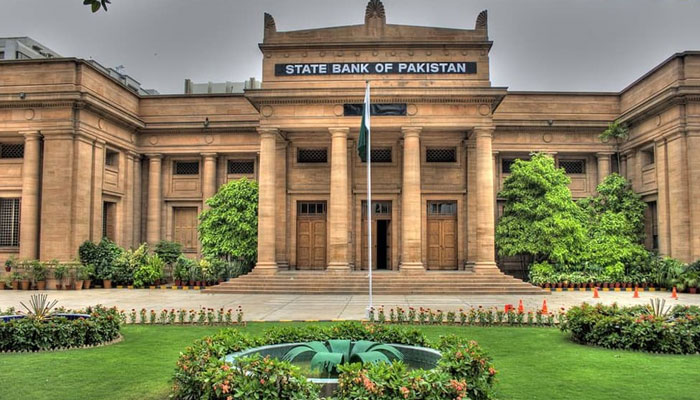Karachi — The State Bank of Pakistan (SBP) announced a 100-basis point reduction in its key policy rate, bringing it down to 11%, as decided by the Monetary Policy Committee (MPC) during its meeting on Monday. This move, which aligns with market expectations of a rate cut amid easing inflation, aims to support economic growth while maintaining price stability.
The Monetary Policy Committee highlighted a sharp decline in inflation during March and April, attributed to reduced administered electricity prices and a continued downtrend in food inflation. Core inflation also fell to 8.0 percent in April, reflecting a favorable base effect and moderate demand. The committee assessed that the inflation outlook has improved, with expectations for it to stabilize within the target range of 5–7 percent in the coming months.
However, the MPC cautioned that global uncertainties, particularly around trade tariffs and geopolitical developments, could pose risks to Pakistan’s economy. “The heightened global uncertainty has led to financial market volatility and a sharp decline in global oil prices,” the committee noted, referencing the International Monetary Fund’s downgraded growth projections for 2025 and 2026.
Economic Developments
The committee reviewed several key developments since its last meeting:
-
GDP Growth: Provisional data showed real GDP growth of 1.7 percent in Q2-FY25, with H1-FY25 growth at 1.5 percent. High-frequency indicators, such as rising vehicle and petroleum sales, suggest sustained economic momentum.
-
Current Account Surplus: A $1.2 billion surplus was recorded in March, driven by record-high workers’ remittances and lower import bills due to declining global oil prices. The cumulative surplus for July–March FY25 reached $1.9 billion.
-
Fiscal Challenges: Federal Board of Revenue tax collection grew by 26.3 percent year-on-year but fell short of targets. The MPC emphasized the need for fiscal reforms, including expanding the tax net and reforming state-owned enterprises.
-
Foreign Exchange Reserves: The MPC expects reserves to reach $14 billion by June 2025, supported by planned official inflows, though risks from global trade uncertainties remain.
Sectoral Insights
In the real sector, agriculture faced challenges with lower-than-expected wheat output, while large-scale manufacturing (LSM) underperformed due to contractions in low-weight and construction-allied sectors. However, positive growth was noted in garments, textiles, pharmaceuticals, and automobiles. The MPC maintained its FY25 growth projection of 2.5–3.5 percent, with an anticipated acceleration in FY26.
On the external front, a sharp rise in the trade deficit to $3.4 billion in April partially offset March’s gains. Nonetheless, robust remittances and moderated imports are expected to sustain a current account surplus for FY25.
Read more: SBP Governor Highlights Economic Recovery, Targets 75% Financial Inclusion by 2028
Monetary and Inflation Outlook
Broad money (M2) growth accelerated to 13.3 percent year-on-year as of April 18, driven by increased private sector credit, particularly in textiles, refineries, and auto financing. The MPC noted that the real policy rate remains sufficiently positive to anchor inflation within the target range while supporting sustainable economic growth.
Looking ahead, the committee anticipates a gradual rise in inflation but expects it to remain within the 5–7 percent target. Risks include volatility in food prices, potential energy price adjustments, and global supply-chain disruptions.
Policy Stance
The MPC emphasized a cautious monetary policy stance to navigate domestic and global challenges. “Maintaining a measured approach is critical to ensuring economic stability amidst global uncertainties,” the committee stated, underscoring the importance of fiscal reforms and effective implementation of recent agricultural tax legislation.
The decision to cut the policy rate reflects confidence in the improving inflation outlook but is tempered by vigilance over external risks. Analysts expect the central bank to closely monitor global developments and domestic fiscal performance in the coming months.


Comments are closed, but trackbacks and pingbacks are open.